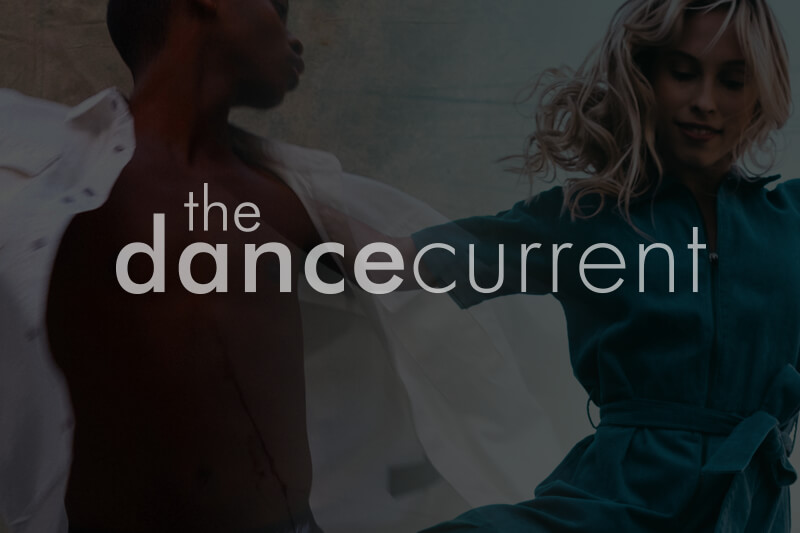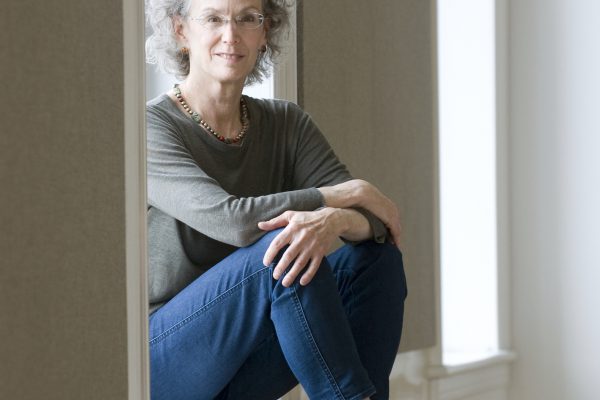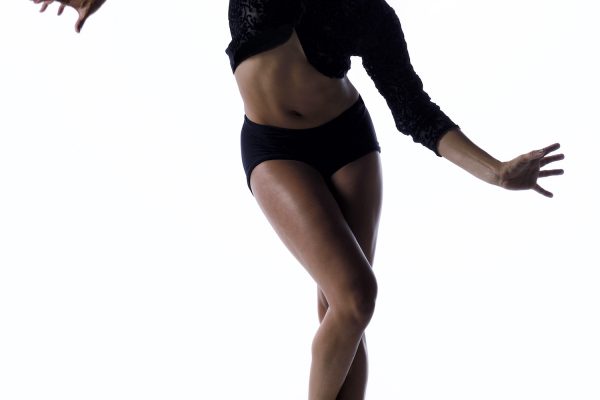“Dancing with Shumka is definitely a unique experience!” says nineteen-year-old Arlyssa McArthur, a new full-time company member of Canada’s Ukrainian Shumka Dancers, based out of Edmonton. After auditioning for the company in June 2016, McArthur was accepted as a probationary member, dancing with the company in Clara’s Dream and Kozbar, before becoming a full-time member in March of this year — a hire that came shortly before the appointment of the company’s new artistic team with former company member and artistic associate Joseph Hoffman taking the reins as artistic director. Not only is McArthur a full-time Shumka member, but she is also a full-time Bachelor of Design student at the University of Alberta, with a focus on visual communication design and a major in computing science. While managing several commitments, McArthur values the importance of prioritizing: “I have decided that if it takes an extra semester or more to complete my degree, that is acceptable.”
The Dance Current asked her about her path into the company and how she balances her busy dance career with other commitments.
Can you briefly describe your introduction to dance and training?
Even before I could walk, I loved bopping up and down to music. I practically wore out my “Dance with the Teletubbies” videotape! I took my first ballet class when I was three years old, and loved it! I started full time lessons at six years of age. Over the years, I trained in many genres including ballet, jazz, tap, lyrical, modern and contemporary. I have certificates in ISTD (advanced) and RAD (intermediate). I also have training in Vagonova and Cecchetti ballet. I did workshops with Citie Ballet, and some training at Alberta Ballet.
How did you come to dance with Canada’s Ukrainian Shumka Dancers?
Growing up, I attended Shumka’s productions and enjoyed the shows immensely. After completing Grade twelve, I decided that I wanted to continue dancing as it had been an integral part of my life. I decided to try something new and audition for Canada’s Ukrainian Shumka Dancers, even though I had no previous Ukrainian dance training. After successful auditions and interviews, I became a probationary member, and ultimately a full member. I am very proud to be able to share my Ukrainian heritage through Ukrainian dance.
I auditioned for Canada’s Ukrainian Shumka Dancers in June 2016, and was accepted as a probationary member, and began training with them. I performed in Shumka’s productions of “Clara’s Dream” and “Kobzar,” and became a full-time member in March 2017.
Can you describe a typical dance day for you?
I have two types of “typical dance days.” During the week, I attend classes at the University of Alberta from 8am until 5pm. Sometimes I stay on campus to complete assignments and study, eat supper and go straight to the dance studio. Mostly, I go home after class, study or take a quick nap, eat supper and head to the studio at 6:45pm. Weekday dance times are Monday and Wednesday from 7:30pm to 10:30pm. I’m home by 11:15pm and then it’s snack and study time.
Typically, on weekends, dance is on Sunday from 11am until 4:30pm, sometimes later, depending on what performance we are working on.
I usually get to the studio at least ten minutes early in order to do extra stretching or roll out any sore muscles. The first hour, the company begins with a class involving barre and centre work. After that we work on technique, solos, turns, tricks and rehearse group dances and performance pieces.
What are you studying at the University of Alberta and how do you manage being a full-time company member as well as a full time student?
At the University of Alberta, I am a Bachelor of Design student with a focus on Visual Communication Design and a Major in Computing Science. Growing up a dancer, you learn it is vital to organize and manage time. Create a schedule, but be flexible, so if all doesn’t go as planned, you won’t stress yourself! I set realistic goals and prioritize. For example, I have decided that if it takes an extra semester or more to complete my degree that is acceptable. To lessen the workload I also take Spring Session courses.
Set high expectations for everything you do and give it your best effort; however, do not get down on yourself if something doesn’t work out. Remember you are human, and every experience is a learning experience.
Do not procrastinate! Begin research papers, assignments, projects, lab work as soon as possible and allow lots of time to review, adjust and complete.
Allow yourself time to socialize, exercise and enjoy your life passions. Dancing is my passion and my escape. It clears my mind and invigorates me.
Surround yourself with good people who have your best interests at heart and those who share your passions and ambitions. I am fortunate that I have a very supportive family who cheer me on, no matter what happens. And I am now blessed to be part of Shumka, as the members have become great friends.
What do you find most inspiring about a career in dance?
The most inspiring thing about a career in dance is being able to perform with people who love dance just as much as I do! Dancing is my passion and the vessel I use for self expression. Experiencing the joyous response from the audience makes all the hard work, practice and time commitment worthwhile. It is a pleasure to perform for others. Sometimes people need a distraction or escape from their everyday lives, whether it’s work stresses, illness or whatever; I am happy to provide that diversion through my dancing. Perhaps I can also inspire others!
What challenges have you faced in your career so far and what have you learned?
The biggest challenge I have experienced is being injured while I was at Alberta Ballet summer program. I was accepted into their ballet program and my intention was to move to Calgary and continue training at the School of Alberta Ballet. The injury made me realize that things can change quickly and that the body can be trained to be strong and powerful, yet still fragile. No matter what you do to recover, and how much you wish the injury to heal quickly, it takes time. The most important thing I learned is that it is essential to be adaptable and willing to try new things. New opportunities await if you are willing to be open to them.
Do you remember a moment where you knew you wanted to be a dancer?
I knew from a very young age that I wanted to be a dancer. Every time I heard music I wanted to move and twirl to it. Even without music, I was told that I never walked from room to room; I danced! Whenever I watched a dance performance, I was in awe of the dancers and I wanted to be just like them.
What do you feel is unique about dancing with Shumka?
Dancing with Shumka is definitely a unique experience! Shumka has amazing passion and dedication for Ukrainian dance and the Ukrainian culture. Members become a family you can rely on who offer support in dance as well as other areas of life. We often spend time together outside the dance studio.
Canada’s Ukrainian Shumka Dancers also provide unique opportunities for performances. Shumka travels to other cities and countries to perform and works with such talents as Kyiv Ballet, Virsky, the Ukrainian Bandurist Chorus and Ukrainian pop star, Ruslana.
What are the physical requirements that go along with Ukrainian dance? Do you have certain aspects of technique that are more emphasized? Do you have any complementary training?
The physical requirements that go along with Ukrainian dance are having strength, endurance, athleticism, flexibility and coordination. The dancing is energetic and fast-paced and the “performance” aspect is emphasized. At Shumka, there is complementary training in ballet and lyrical dance, as well as character/folk dance. These go well with my dance style and previous training, including character and classical ballet, lyrical, contemporary and modern dance. The fast-paced aspect of Shumka is similar to my jazz and tap training. Because of all my dance training, I was able to learn Ukrainian dance fairly quickly. Moreover, the other members are always willing to teach and practice with you.
Where did you grow up training?
I began dance training in 2004, when I was six years old, at a dance studio in St. Albert, Alberta, called The Art of Dance. I took lessons in ISTD Ballet, Pointe, Jazz, Tap, Lyrical, Contemporary and Modern Dance until 2013, when the studio closed down. In addition, during the 2012/13 season, I trained at Edmonton Dance Centre in RAD Ballet. My summers were spent doing programs with Citie Ballet and Alberta Ballet instructors. In 2013, I trained with Alberta Ballet for their Summer Dance Intensive program and was accepted into the School of Alberta Ballet for the fall. I was injured in the summer program and returned to home to recuperate. That fall, I joined Shelley’s Dance Company to regain my strength while taking ballet and stretch classes. In December, during my successful RAD Intermediate Exam, I suffered a re-injury. I discovered that my initial injury was misdiagnosed as an achilles tendon injury, but it was actually flexor hallucis longus tendonitis. Healing and recovery was much slower this time and I did not return to any dance training until the fall of 2014, when I joined Marr-Mac Dance & Theatre Arts, studying ISTD and Vaganova Ballet.
What advice would you give to someone who wishes to become a professional performer?
My advice for those who wish to become a professional performer:
Choose excellent instructors and learn various genres of dance. It is important to be adaptable. Keep learning, practice a lot, work hard and always give your best effort. It’s okay to sweat! Build strength, flexibility, coordination and endurance. Learn from mistakes and use criticism as a tool to grow and improve; never take it personally. Stay positive. Be punctual. Be humble. Perform not only with technique and movement, but with your heart and soul.
Read the full profile in the Sepember/October issue.
Tagged: On the Ground, Ukrainian, AB , Edmonton





